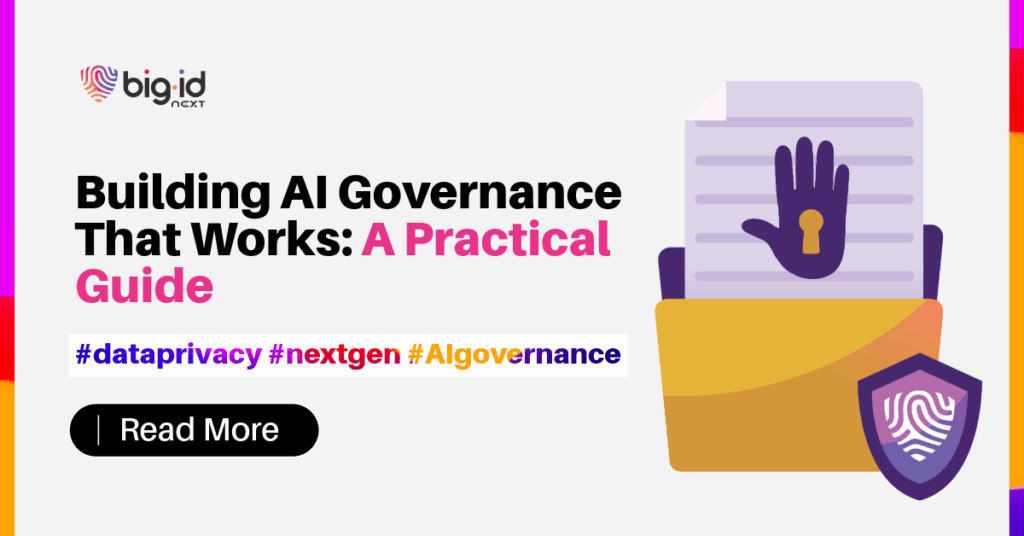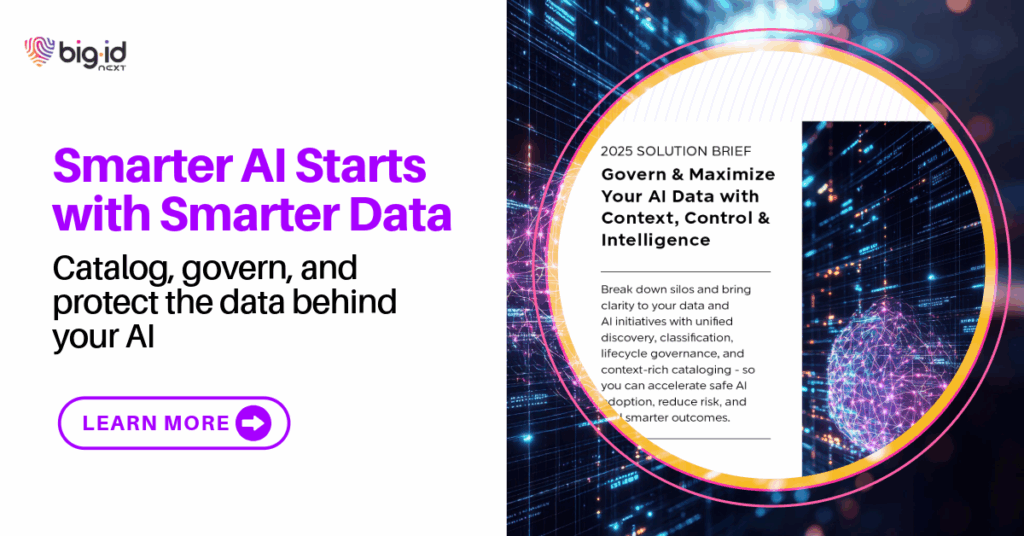As organizations increasingly adopt AI to drive innovation and efficiency, the need for robust governance grows more urgent. According to the Cybercrime Trends 2025 report, 87% of organizations faced an AI-powered cyberattack in the past year. We can all agree that AI can unlock powerful opportunities—but without clear guardrails, it can also expose companies to significant ethical, regulatory, and reputational risks.
While there’s no one-size-fits-all blueprint for AI governance, there are essential steps every organization can take to build a sustainable, risk-aware program.
Start with Discovery and Risk Classification
The foundation of any AI governance initiative is visibility. You can’t govern what you can’t see. This involves identifying all AI systems in use, including shadow AI, and classifying them according to their risk level. Consider factors such as data sensitivity, intended use case, and potential downstream impact. Build a central inventory of models, datasets, owners, and risk tiers to serve as your single source of truth.
BigID automates AI and data discovery, detecting both sanctioned and unsanctioned AI systems. With built-in risk classification tied to data sensitivity and usage, BigID makes it easier to map your AI ecosystem and flag high-risk assets.
Formalize AI Risk Assessments
Once discovered, AI assets should be evaluated with a consistent assessment process. This includes measuring risk exposure, documenting intended outcomes, identifying mitigation strategies, and aligning with existing risk and compliance workflows.
BigID’s AI Risk Assessments integrate seamlessly with broader AI and data risk frameworks—like the NIST AI RMF and ISO 42001—to pinpoint where AI intersects with privacy, security, and data protection. BigID enables cross-functional collaboration among legal, AI engineering, data governance, and other stakeholders to streamline impact assessments and ensure accountable, compliant AI use.
Create a Common Language Around Risk
Many AI governance challenges stem from misalignment between technical and business teams. Establish shared terminology for how risks are defined and addressed. Provide training to foster AI literacy, build internal awareness, and embed governance into team culture.
BigID streamlines governance with customizable workflows and policy templates that turn complex requirements into clear, actionable tasks. By aligning business terms with metadata, BigID automates and centralizes business glossary creation, which creates a common language around risk, reducing manual effort and errors between teams.
Monitor, Measure, and Adjust
Governance isn’t a one-time project—it’s ongoing. Set up dashboards to monitor policy compliance, regulatory updates, and activities like data subject requests. Integrate with internal audit, privacy ops, and legal to track where risks evolve and when to act.
With BigID, privacy, legal, and audit teams can automate oversight with compliance dashboards, surface policy violations, and monitor data subject requests. BigID helps operationalize AI risk management frameworks like the NIST AI RMF and ISO/IEC 42001 by enabling visibility across data flows, identifying shadow AI, and automating risk classification and mitigation.
Embrace Cross-Functional Collaboration
AI risk doesn’t live in a vacuum. It touches IT, privacy, legal, product, and business strategy. Bringing these voices together through shared assessments, playbooks, and policies ensures broader buy-in and better decision-making.
BigID enables cross-functional collaboration by providing shared AI risk assessment workflows, customizable policy templates, and centralized governance tools that align IT, privacy, legal, product, and business stakeholders. By unifying these teams around a single platform, BigID fosters transparency, consistent decision-making, and accountability across the AI lifecycle.
Strengthen the Data Foundation
At the core of AI governance is data governance. Clean, secure, and well-managed data is critical to responsible AI. This includes data minimization, quality checks, hygiene, and tight access controls.
BigID enables data cleansing with policy-based data redaction by hashing, anonymizing, or tokenizing sensitive data to meet your specific needs before it reaches LLMs or end-users. It also cleanses pre-trained and vector data to ensure AI models are trained and deployed with a safe, ethical, and compliant context.
Next Steps
Begin with AI and data discovery to identify what’s already in use. Secure executive sponsorship to align governance with strategy. Then implement risk classification and remediation workflows that scale with your program. AI governance isn’t about slowing innovation—it’s about enabling it safely.
To see how BigID can empower your privacy, security, and compliance teams — book a 1:1 demo with our experts today.


